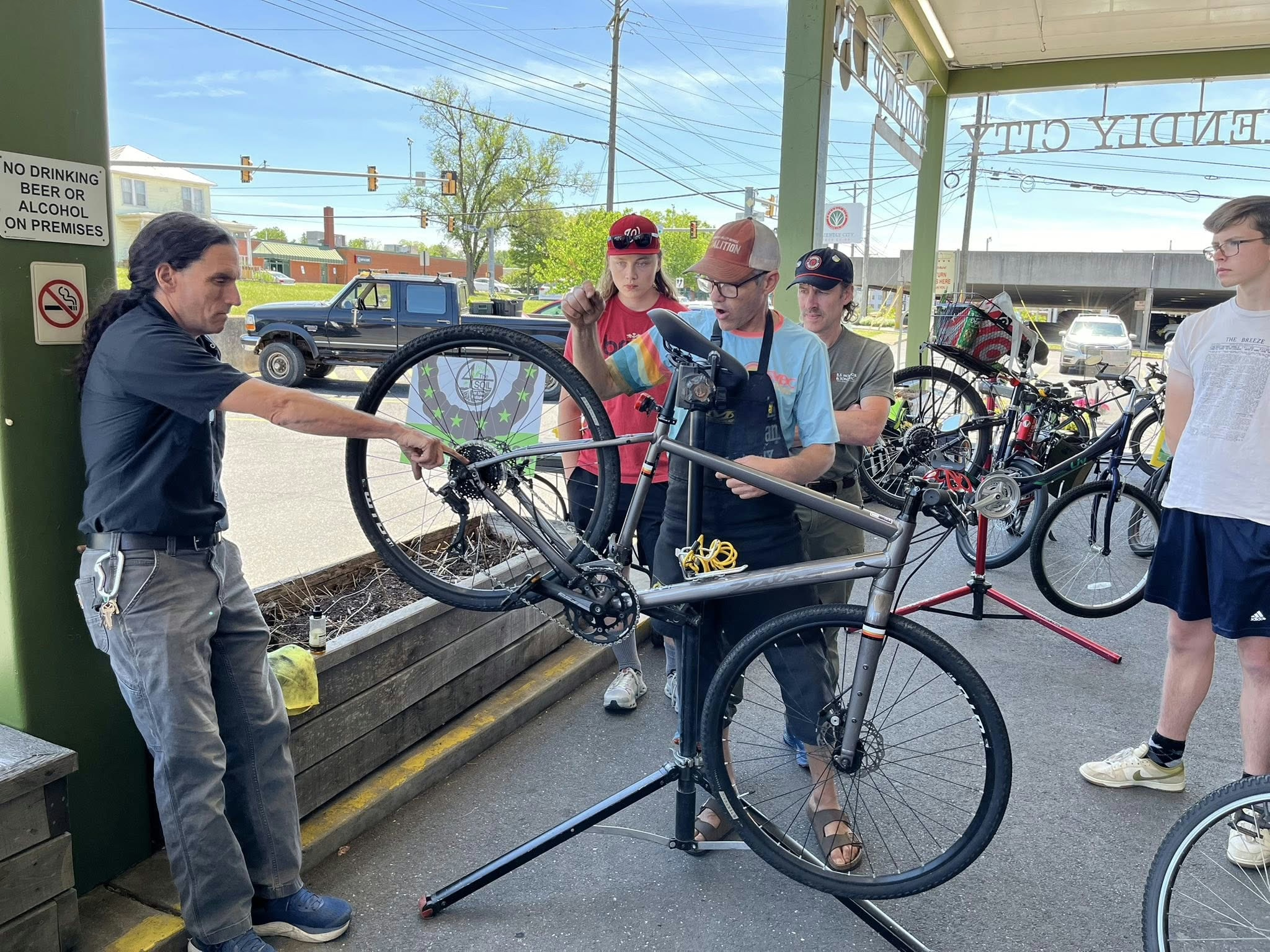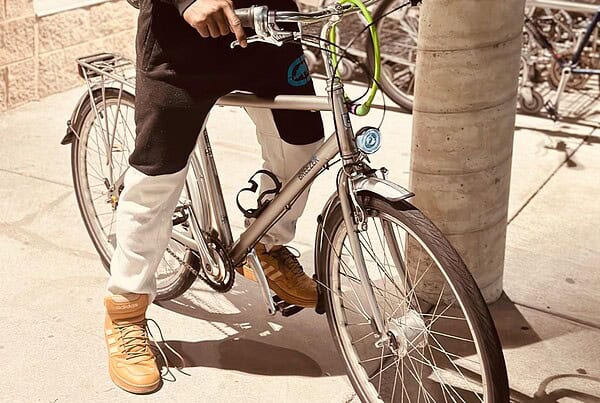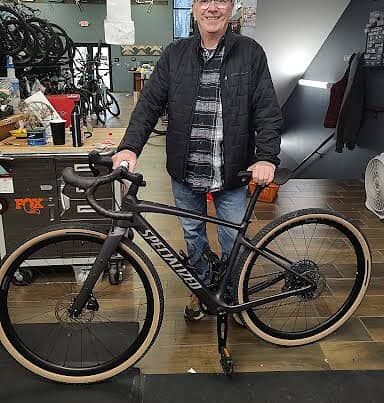If you’ve ever sat down with Ben Wyse or Thomas Jenkins to talk about bikes, then you know the kind of passion we’re talking about.
Straightforward knowledge, and exuding with joy about what the bike can be—for both of them, it’s been their livelihood for over 30 years as mechanics and lifelong riders. Ben coordinates Bikes for Neighbors, and Thomas wears many hats as the owner of Shenandoah Bicycle Company, a Shenandoah Valley Bicycle Coalition Board Member, and Chair of the Western Slope Trails team.
Over 20 of us gathered for a free community event under the Friendly City Food Co-op patio pavilion. They walked us through the basics of doing our bike maintenance, to the nitty-gritty questions.
We learned how to preventively and proactively care for our bikes to avoid big, messy problems down the road. Whether someone rides daily or pulls their bike out of the barn after two years, what first felt overwhelming quickly became doable, approachable, and inviting.

The ABCs of Bike Maintenance
A is for Air
-
Use a floor pump with a gauge to check your tire pressure regularly. Underinflated tires can make riding harder and increase the risk of flats.
-
Most tires list a recommended PSI range on the sidewall. Staying in the middle of that range is often best for comfort and traction.
-
Lower pressure (within the recommended range) gives better grip and a smoother ride on gravel or trails—but don’t go so low that your tire bottoms out on the rim.
-
Pro tip: You can find public bike pumps in some parks around town, and most local bike shops are happy to help you check your tires.
B is for Brakes
-
Squeeze your brake levers before each ride. They should feel firm and responsive—not mushy or too easy to pull.
-
Visually check your brake pads: they should hit the rim or disc rotor squarely and still have some material left (not worn to the metal).
-
Listen for squeaks or rubbing, which might mean the pads need adjustment or cleaning.
-
If your brake levers pull all the way to the handlebars, it’s time for a tune-up.
C is for Chain
-
A clean and lubricated chain makes for a smoother, quieter, and longer-lasting ride.
-
Use a bike-specific chain lube—a little goes a long way!—then wipe off the excess to prevent dirt from sticking.
-
Avoid using WD-40 or household oils, which can attract grime or cause buildup.
-
If your chain is rusty, gritty, or making noise, clean it with a rag and re-lube.
(And S is for Shifting!)
-
Shift through all your gears to make sure things are moving smoothly. Skipping, jumping, or lagging gears can indicate a cable tension issue or dirty drivetrain.
-
Don’t be afraid to use your full range of gears—shifting early and often helps keep your pedaling efficient.
-
If shifting is clunky or unpredictable, it might be time for a tune-up, especially if the cables or derailleurs need attention.
-
Keep an eye on the derailleur hanger (that small arm near your rear gears)—if it’s bent, your shifting will be off no matter how clean the chain is.

The takeaway? You don’t need to be a professional mechanic to care for your bike. With a few simple checks before every ride, you can extend your bike’s life, keep your rides smoother and safer, and avoid dreaded roadside surprises.
If you ever need help, just swing by your local bike shop or join us at the next community bike event—because maintenance is always more fun (and less intimidating) when we do it together.
Thank you to the Friendly City Food Co-Op for hosting this event and inviting us!





